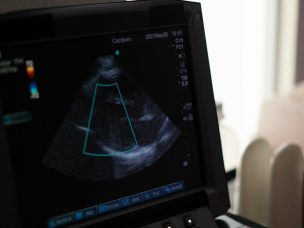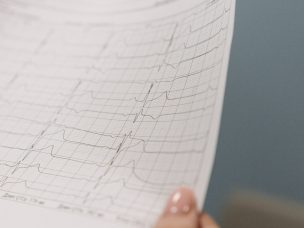Transthyretin Amyloid Cardiomyopathy
Concurrent Amyloidosis in Elderly With Aortic Stenosis: Implications for TAVI
A recent study evaluated the prevalence of amyloid transthyretin cardiomyopathy in elderly patients with severe aortic stenosis. The results provide insights into the potential implications for those undergoing transcatheter aortic valve implantation. Elderly patients with severe aortic stenosis may also present with amyloid transthyretin cardiomyopathy. Echocardiography and invasive hemodynamics may help detect coexisting pathologies. Concurrent...
ATTR-CA Prevalence and Screening in Transcatheter Aortic Valve Replacement Population
Transthyretin cardiac amyloidosis prevalence in the transcatheter aortic valve replacement population is lower than previously described, and NT-pro BNP can guide screening, according to a recent study. Transthyretin cardiac amyloidosis (ATTR-CA) prevalence in aortic stenosis patients is 5–20%, with higher rates in those who underwent transcatheter aortic valve replacement (TAVR) vs. surgical aortic valve replacement...
Effects of Tafamidis on Patients With Ala97Ser Hereditary Transthyretin Cardiomyopathy
Tafamidis slowed cardiac remodeling and potentially lowers amyloid deposition in patients with hereditary A97S transthyretin cardiomyopathy in a recent study. Transthyretin amyloid cardiomyopathy (ATTR-CM) is a rare but life-threatening disease. Tafamidis decreases amyloid formation and is an effective treatment for ATTR-CM. There are differences in the level of cardiac involvement among disease variants. Up to...
Tc-99m PYP Imaging: Frequency and Importance of Extracardiac Findings
Medically reviewed by Dr. Kimberly Langdon Cull, M.D. on Sept. 21, 2023 Extracardiac uptake occurs in 11% of Tc-99m PYP scintigraphy patients. However, actionable findings are rare, according to a recent study. Transthyretin cardiac amyloidosis (ATTR-CA) can be diagnosed with the help of technetium-labeled bone-avid radiotracers. Technetium pyrophosphate (Tc-99m PYP) extracardiac uptake in this situation has...
Transthyretin Amyloid Cardiomyopathy in Preserved Ejection Fraction Heart Failure Patients
Medically reviewed by Dr. Shani S. Saks, D.O. on July 27, 2023 This study found that patients with higher transthyretin amyloid cardiomyopathy scores had different clinical and echocardiographic characteristics and higher cardiovascular risk. Heart failure patients with preserved ejection fraction may benefit from the transthyretin amyloid cardiomyopathy score’s moderate discriminatory performance and satisfactory calibration in...
Cardiac Amyloidosis Prevalence in Old Patients With Heart Failure
Medically reviewed by Dr. Shani S. Saks, D.O. on July 27, 2023 Cardiac amyloidosis is a common cause of heart failure and should be screened in elderly heart failure patients with myocardial thickening. Cardiac amyloidosis (CA) has emerged as an underdiagnosed cause of heart failure (HF) in recent years. The available studies on CA prevalence...
Diagnostic Value of Left Atrial Strain Imaging in Cardiac Amyloidosis
Medically reviewed by Dr. Shani S. Saks, D.O. on July 27, 2023 Left atrial function evaluated by speckle tracking echocardiography is significantly impaired in cardiac amyloidosis patients compared to hypertrophic cardiomyopathy patients and healthy controls. Left atrial (LA) function assessment is crucial for gauging left ventricular filling in various cardiovascular conditions. Cardiac amyloidosis (CA) causes...
Invasive and Non-Invasive Pathways for Diagnosing Cardiac Amyloidosis
Medically reviewed by Dr. Shani S. Saks, D.O. on July 27, 2023 Diagnosing cardiac amyloidosis (CA) can be difficult due to its nonspecific presentation and overlapping clinical features. Clinical suspicion, cardiac biomarkers, monoclonal protein assessment, echocardiography, cardiac magnetic resonance findings, and bone scintigraphy are important in the diagnostic algorithm. Non-invasive techniques are preferred, but tissue...
Prevalence and Treatment of Arrhythmias in Cardiac Amyloidosis Patients
There is a high prevalence of arrhythmias in cardiac amyloidosis patients, with implantable devices and catheter ablation showing partial effectiveness in their treatment. The deposition of abnormal protein fibrils in cardiac amyloidosis can cause heart failure associated with diastolic dysfunction and arrhythmias. Various types of arrhythmias are observed in cardiac amyloidosis patients. However, the prevalence...
More Medical News














